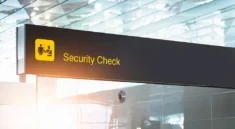
Traveling internationally is a thrilling experience filled with cultural discoveries, breathtaking landscapes, and unforgettable adventures. But managing money while abroad can be confusing, and even a bit stressful if you’re not prepared. From choosing the right cards, using mobile payment apps, to knowing when to use local cash, smart financial planning is crucial for stress-free travel.
Many travelers face the same questions: Should I bring more cash or rely on my card? Is it safe to use mobile payments? How do I avoid foreign transaction fees? This guide will help you navigate all your financial options and show you how to spend smartly and safely across borders.
1. The Golden Rule: Diversify Your Payment Methods
When traveling abroad, don’t rely on just one payment method. Instead, aim for a balanced mix of credit cards, debit cards, local cash, and mobile wallets.
Why Diversification Matters:
- Protection from loss or theft: If one method is compromised, you have backups.
- Convenience: Some places may accept only cash, while others are card- or app-friendly.
- Cost-efficiency: Some cards offer better exchange rates or cashback.
Always carry at least two cards (preferably from different issuers/networks), some local currency, and have mobile payment options ready.
2. Choose The Right Travel-Friendly Cards
Not all cards are created equal. When traveling, the best cards are those that are internationally accepted, secure, and minimize fees.
A. Look for These Features:
- No foreign transaction fees (typically 1–3% of every purchase).
- Wide acceptance (Visa and Mastercard are more universal than American Express).
- Chip and PIN or contactless support (many countries prefer these formats).
- Travel rewards and purchase protections (lost luggage, fraud alerts, etc.).
B. Credit vs. Debit Cards:
- Credit cards are safer for large purchases or bookings (flights, hotels).
- Debit cards are useful for ATM withdrawals and budgeting.
Carry both, but use credit for most spending to maximize safety and rewards.
3. Notify Your Bank Before You Travel
To prevent your card from being blocked abroad, inform your bank or card issuer of your travel dates and destinations.
Many banks now allow you to set travel notices through their apps or websites. Also, make sure your contact details are up to date in case of suspicious activity alerts.
4. Use ATMs Strategically
ATMs are usually the best way to get local currency at competitive exchange rates, but they come with certain rules and caveats.
A. Use Bank-Owned ATMs
Avoid ATMs in convenience stores, hotels, or tourist areas. Stick to machines owned by major banks to reduce fees and avoid tampering.
B. Choose Local Currency Option
When prompted to choose between your home currency or local currency during a withdrawal, always choose local. This avoids Dynamic Currency Conversion (DCC), which usually has poor exchange rates.
C. Limit Withdrawals
Plan ahead and withdraw larger amounts less frequently to minimize fixed fees per transaction. Store extra cash securely in your hotel safe.
5. Understand Currency Exchange and Fees
When it comes to exchanging money, ignorance is expensive. A small mistake could cost you more than you think.
A. Avoid Airport Currency Exchanges
These offer some of the worst exchange rates and high service charges. Only use them in emergencies.
B. Use Currency Converter Apps
Apps like XE Currency, Currency Converter Plus, or OANDA provide real-time exchange rates and help you compare prices easily while shopping abroad.
C. Watch for Hidden Fees
- ATM withdrawal fees (from local and home banks).
- Foreign transaction fees.
- Dynamic currency conversion scams.
- Overpriced exchange bureaus.
Knowing the real mid-market rate (the rate banks use) gives you leverage in comparing rates and avoiding overpayment.
6. Always Keep Some Local Cash
Despite the digital revolution, cash is still king in many places, especially in small towns, street markets, taxis, or budget eateries.
A. When You’ll Need Cash:
- Street food vendors.
- Public transportation.
- Tipping (in countries where it’s customary).
- Small souvenirs or entry fees.
B. How Much to Carry:
Enough for 2–3 days of daily expenses. Don’t carry large sums. Replenish at local ATMs or safe exchange points.
C. Be Smart With Storage:
Keep cash in multiple places—main wallet, hidden pouch, backup stash in luggage or hotel safe—to reduce risk in case of theft.
7. Embrace Mobile Payment Apps
In many countries, especially across Asia and Europe, mobile payments have become more common than cards or cash.
A. Popular Mobile Apps by Region:
- Apple Pay / Google Pay – Global use in modern outlets.
- Alipay / WeChat Pay – China and parts of Southeast Asia.
- Paytm / PhonePe – India.
- Revolut / Wise / Monzo – UK and Europe for banking and transfers.
B. Advantages:
- Speed and convenience: No need to carry a wallet.
- Secure: Biometrics or passcodes add protection.
- Contactless: Ideal during health-sensitive times (e.g., COVID).
Ensure your device is unlocked and compatible with foreign SIM cards or roaming plans to use mobile apps abroad.
8. Use Multi-Currency Apps and Digital Banks
Modern fintech apps are transforming the way travelers handle money. Services like Wise (formerly TransferWise), Revolut, and Monzo offer:
- Multi-currency wallets
- Real-time currency exchange
- Low-fee transfers
- Global ATM access
- Instant card freeze or replacement via app
These are especially useful for long-term travelers or digital nomads, as they streamline international finance with a tap.
9. Be Wary of Contactless Card Scams
Contactless cards and mobile wallets are convenient, but they also attract fraud.
Protect Yourself:
- Use RFID-blocking wallets to prevent card skimming.
- Enable instant transaction alerts on your banking app.
- Turn off contactless payments when not in use.
Always review your statements and app notifications regularly to catch unauthorized charges quickly.
10. Tipping Etiquette: Cash or Card?
Tipping customs vary wildly from country to country. In some places, tipping is expected; in others, it can be considered rude.
A. Know Local Norms:
- USA, Canada: 15–20% tip, usually by card or cash.
- Japan, South Korea: Tipping is not customary and may be refused.
- Europe: Tips are appreciated; usually 5–10%, often in cash.
- Southeast Asia: Small cash tips appreciated in service industries.
Apps like Tip N Split or GlobeTips help calculate the right amount and method based on country norms.
11. Stay Organized with Receipts and Budgets
Keeping track of your spending helps you stay within budget and avoid surprises later.
A. Use Expense Tracker Apps:
- Trail Wallet (iOS)
- Trabee Pocket
- Spendee
- Mint / PocketGuard
Log purchases by payment type and category. Some apps let you upload photos of receipts for easy tracking.
B. Save Receipts
Save receipts for large purchases, tax refunds (VAT), or disputes. Organize them by date or type in a travel folder.
12. Handle Emergency Situations Smartly
No matter how prepared you are, things can go wrong. Here’s how to be ready:
A. Lost or Stolen Cards?
- Report immediately to your bank or through the app.
- Freeze cards via your banking app (most allow this).
- Use your backup card or withdraw emergency funds via Western Union or MoneyGram.
B. Have an Emergency Cash Backup
Store $50–$100 in a separate, hidden location, such as in your luggage, under shoe soles, or a money belt.
C. Keep a Digital Backup
Photograph or scan your cards, passport, and travel insurance and store them securely online (e.g., encrypted cloud storage).
13. Post-Trip Financial Tips
Your financial management doesn’t stop when you land home.
A. Review All Transactions
Go through your card and app statements to spot errors or fraudulent charges.
B. File VAT Refunds
In some countries, tourists can claim VAT refunds for purchases made over a certain amount. Save your receipts and claim at the airport or online.
C. Reconcile Your Travel Budget
Did you overspend? What payment methods worked best? Use this reflection to plan smarter for your next trip.
Conclusion: Spend Smart, Travel Confidently
Navigating finances abroad doesn’t have to be complicated. With a little planning, you can confidently manage your money in any country, avoid unnecessary fees, and have the tools to deal with emergencies.
By using cards wisely, embracing apps for convenience, and keeping local cash on hand, you’re equipping yourself to explore the world freely, safely, and securely.
Remember: Every destination has its quirks. But with the right knowledge in your pocket—digital and literal—you’ll be prepared to make the most of every journey.



